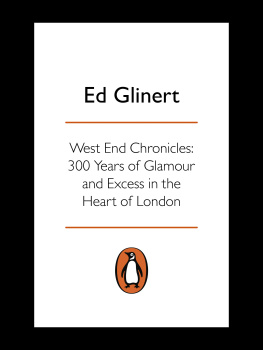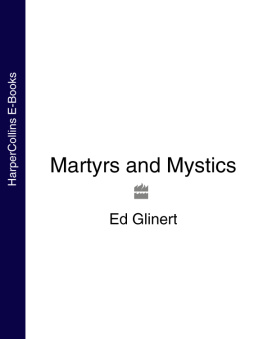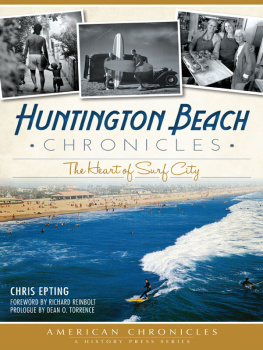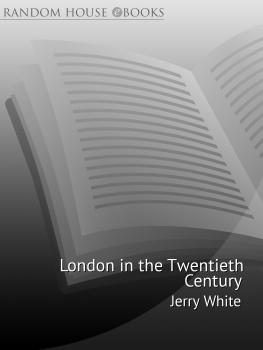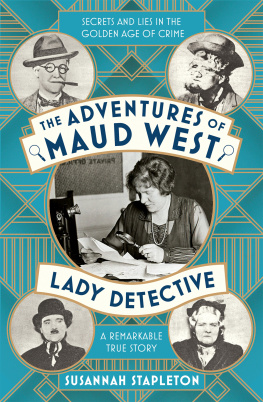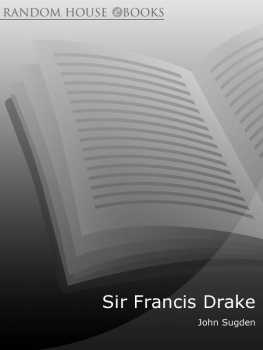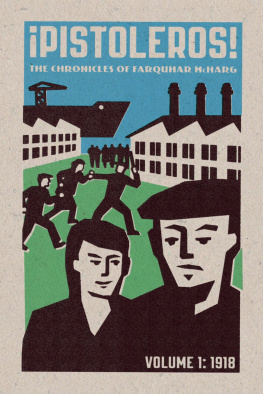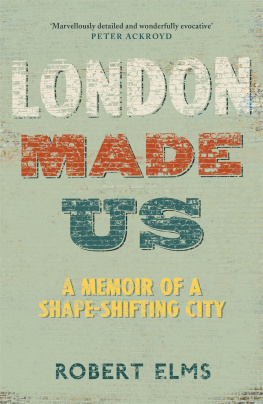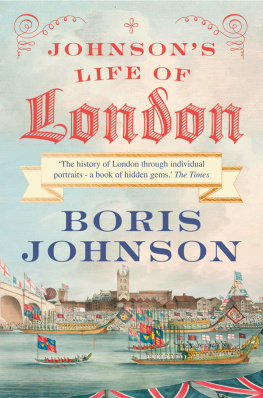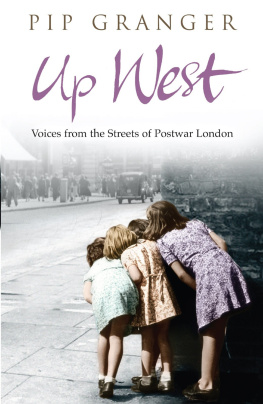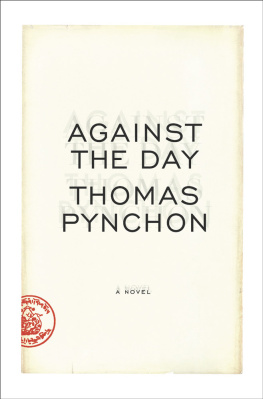West End Chronicles
BY THE SAME AUTHOR
Literary London
The London Compendium
East End Chronicles
ED GLINERT
West End Chronicles
300 years of glamour and excess in the heart of London
ALLEN LANE
an imprint of
PENGUIN BOOKS
ALLEN LANE
Published by the Penguin Group
Penguin Books Ltd, 80 Strand, London WC2R 0RL, England
Penguin Group (USA) Inc., 375 Hudson Street, New York, New York 10014, USA
Penguin Group (Canada), 90 Eglinton Avenue East, Suite 700, Toronto, Ontario, Canada M4P 2Y3
(a division of Pearson Penguin Canada Inc.)
Penguin Ireland, 25 St Stephens Green, Dublin 2, Ireland (a division of Penguin Books Ltd)
Penguin Group (Australia), 250 Camberwell Road,
Camberwell, Victoria 3124, Australia (a division of Pearson Australia Group Pty Ltd)
Penguin Books India Pvt Ltd, 11 Community Centre,
Panchsheel Park, New Delhi 110 017, India
Penguin Group (NZ), 67 Apollo Drive, Rosedale, North Shore 0632, New Zealand
(a division of Pearson New Zealand Ltd)
Penguin Books (South Africa) (Pty) Ltd, 24 Sturdee Avenue,
Rosebank, Johannesburg 2196, South Africa
Penguin Books Ltd, Registered Offices: 80 Strand, London WC2R 0RL, England
www.penguin.com
First published 2007
Copyright Ed Glinert, 2007
The moral right of the author has been asserted
All rights reserved
Without limiting the rights under copyright
reserved above, no part of this publication may be
reproduced, stored in or introduced into a retrieval system,
or transmitted, in any form or by any means (electronic, mechanical,
photocopying, recording or otherwise), without the prior
written permission of both the copyright owner and
the above publisher of this book
A CIP catalogue record for this book is available from the British Library
EISBN: 9780141907482
To the memory of Betty Glinert
Contents
Introduction
The West End is the beating heart of London, the centre of glamour, style and sophistication. It is a land of glitz and gold. Here are the bright lights and red lights of Soho, the romantic mews of Mayfair, the elegant but rigid streets of Marylebone, and the chic enclaves of Fitzrovia. Here is Oxford Street, Londons most congested shopping stretch; here are the flashing neon signs of Piccadilly Circus, the most famous landmark in the world. Here is Regent Street, the ultimate in urban grandeur, and Old Compton Street, the epitome of social nonconformity. But it is also a place of loose morals, premeditated violence and necessary secrecy; the ulterior motive behind the gleaming smile.
Unlike its dark alter ego the East End few books have been written about the West End as a single entity. Many are the volumes on Soho or May-fair. There are various titles on Marylebone and Fitzrovia. Regent Street has several tomes just to itself. But as far as the West End as a whole is concerned there is a limited collection.
The West End is an easy place to locate. Controversy surrounding its borders is minimal compared to that which accompanies the East End, for instance. The West End consists of four constituent areas, each of which radiates away from Oxford Circus. Running clockwise from the north-west they are Marylebone, Fitzrovia, Soho and Mayfair. Such enduring names, yet their etymology is the usual catalogue of chance and contrivance. Marylebone has been Marybone and the awkward St Marylebone but derives from St Mary-by-the-Bourne (the popular name for the River Tybourn or Tyburn). Some locals still like to pronounce it Marlybone, probably to differentiate the still somewhat working-class section north of Marylebone Road, near Marylebone Station, from the up-market doctors quarter around Harley Street.
Mayfair and Soho are names with less sombre origins. Mayfair was built around the setting of the ancient spring fair. Soho! was a hunting cry and is of uncertain origin. Of the four West End quadrants it is Fitzrovia, by far, that has the most interesting etymology. Until the mid twentieth century it was variously described as North Soho (glib) or Bloomsbury (too far west). Surely it deserved its own title? Thanks to those writers and artists who patronized the Fitzroy Tavern on Charlotte Street in the 1930s it received one: the obvious but ingenious Fitzrovia, with which it could sit confidently alongside Belgravia and Tyburnia.
Even then, it took until the end of the twentieth century for the name to be accepted by Londoners, map-makers and guide-book writers. Detractors pointed out that the name had been made up, as if Chalk Farm, the Isle of Dogs and Havering-atte-Bower were handed down to Moses with the commandments on Mount Sinai.
In the 1990s there was even a newspaper campaign to kill off Fitzrovia and replace it with the horrible Americanism Noho, sometimes written even more outlandishly as NoHo. This rightly failed to take off, probably when would-be users wondered whether New Yorks similar sounding SoHo (south of Houston Street) implied that Noho was the land north of (H)oxford Street, as might be pronounced by an aspiring cockney chimney sweep from My Fair Lady.
The borders around the West End separating it from ordinary London are mostly well-defined. To the north there is Marylebone Road / Euston Road formidable, traffic-choked, a road of such strength and speed the casual geographer is immediately awakened to the idea that the areas on either side have little common bond. This road was Londons first bypass, built in 1756 to ease the manoeuvring of troops and allow drovers to take their cattle to Smithfield Market without having to use Oxford Street and Holborn.
To the east is Tottenham Court Road, a tedious stretch of hi-fi shops and dreadful pubs beyond which lies the intellectual Georgian vistas of Bloomsbury, and further south Charing Cross Road, with its ever-threatened bookshops. West of the West End is the obvious other world of Hyde Park, a much-needed respite from all the brick, glass and concrete of the West End, although north-west of Marble Arch the green oasis gives way to the slightly shabby spoils of Bayswater.
The West Ends southern boundaries are not so clear. Piccadilly is an obvious border, for beyond there is another, smaller, green lung the pedestrianly named Green Park before the super-expensive real estate of St Jamess comes into view. But heading east to meet Charing Cross Road again it is not always easy to make out what belongs to the West End and what does not. Chinatown does; it is the West End in microcosm cosmopolitan, fiercely independent, shabby but stylish, workaholic but relaxed. Trafalgar Square does not. It is the window on to Whitehall. It belongs to Westminster. As for Leicester Square, to many the social centre of London, it sometimes lies within (historically it was never quite accepted by Westminster), sometimes without (when the preponderance of fire-eaters and skittle jugglers send the discerning West End aesthete heading back to the unfussed decadence of Soho).
Then there are those parts of London near the West End that arent in it: Bayswater, Bloomsbury, Charing Cross, Covent Garden, Holborn, Kensington and St Jamess. For the idle wanderer there is even a handy rule of thumb: W1 is found in small letters on the road names throughout the West End, a tactic that fails only in a few streets around Leicester Square.
The West End thus defined geographically, what is its purpose socially? Despite lacking the visual architectural splendour of Amsterdam or Edinburgh, it is the sheer brazen scale of the West End that dwarfs all its rivals. The West End is a place which millions Londoners and out-of-towners are instantly familiar with. It is enticing to explore and exciting to read about. Its place in London life is not based around the court (like St Jamess), religion (Westminster) or Mammon (the City), but it tolerates a little of each. After all, Soho Square was built around the seventeenth-century home of Charles IIs illegitimate son, the Duke of Monmouth; the West End has played host to several mystical visionaries, particularly William Blake and Joanna Southcott, and the more bizarre quasi-religious groups, such as the Hermetic Order of the Golden Dawn; and Mammon, too, makes an appearance, for though an area like Mayfair is more of a rich persons playground than a money-making exercise in its own right it is here that both the epic department store and the small specialist shopkeeper are to be found
Next page
